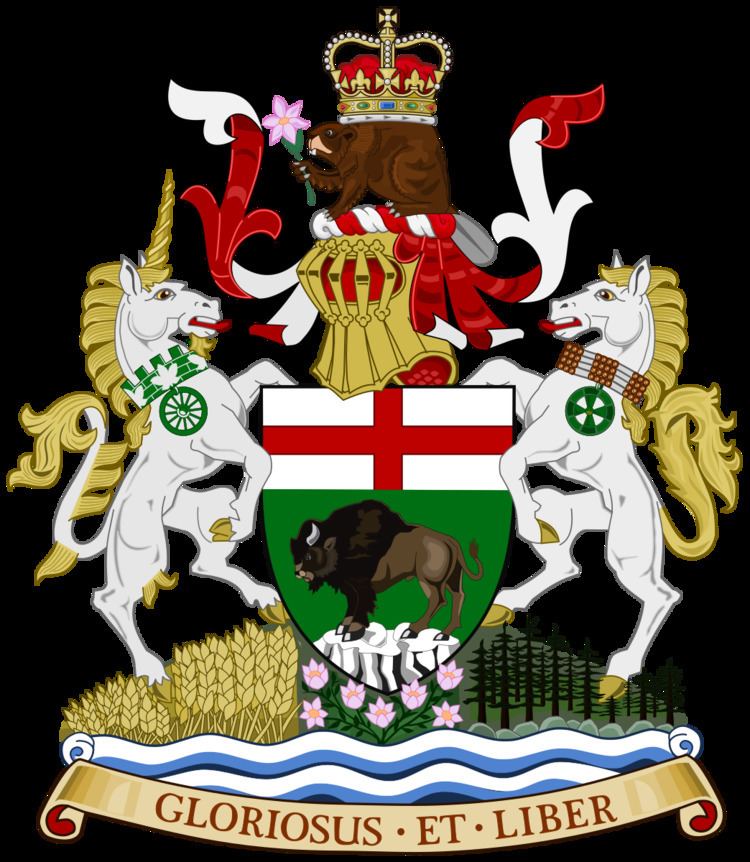Adopted 1905, augmented 1992 | ||
 | ||
Crest Upon a helm in trian aspect Or mantled Gules doubled Argent and wreathed of these colours a beaver sejeant upholding with its back a representation of the Royal Crown proper its dexter forepaw raised holding a prairie crocus (Anemone patens) slipped also proper. Escutcheon Vert on a Rock a Bison statant proper, on a Chief Argent the cross of St. George. Supporters Dexter a unicorn Argent armed crined and unguled Or gorged with a mural coronet Vert masoned and encircled with maple leaves Argent pendant therefrom the wheel of a Red River cart Vert sinister a horse Argent crined queued and unguled Or gorged with a collar of Prairie Indian beadwork proper pendant therefrom a cycle of life medallion Vert Compartment A mound bearing seven prairie crocuses slipped proper between to the dexter a wheat field Or and to the sinister a forest of white spruce (Picea glauca) proper the whole rising above barry wavy Argent and Azure | ||
The original coat of arms of Manitoba was granted to Manitoba by a Royal Warrant of King Edward VII on May 10, 1905. The shield is also featured on the provincial flag.
Contents
History
The coat of arms was augmented on October 23, 1992 by a Vice-Regal Warrant of then-Governor General Ramon Hnatyshyn to include a crest, supporters, and motto.
Symbolism
Crest
The helmet above the shield is gold and faces left, a symbol of Manitoba's co-sovereign status in Confederation. The mantling is in the national colours of Canada. The crest is a beaver, Canada's national animal, holding a prairie crocus, Manitoba's provincial flower. The crest is surmounted by a crown, representing royal sovereignty.Shield
On the white chief is the Cross of Saint George, a symbol of England. The bison is a symbolic reminder of the various bison that formerly roamed the province. The remainder of the Coat of Arms was granted in 1992.Compartment
The compartment represents a diverse landscape.Supporters
The beadwork and Red River wheel allude to Manitoba's past, while the maple leaf is the national emblem of Canada.Motto
The motto is Gloriosus et Liber, "glorious and free," a line taken from the English lyrics to the Canadian national anthem "O Canada."Animals
Unicorn Horse Beaver Bison
References
Coat of arms of Manitoba Wikipedia(Text) CC BY-SA
